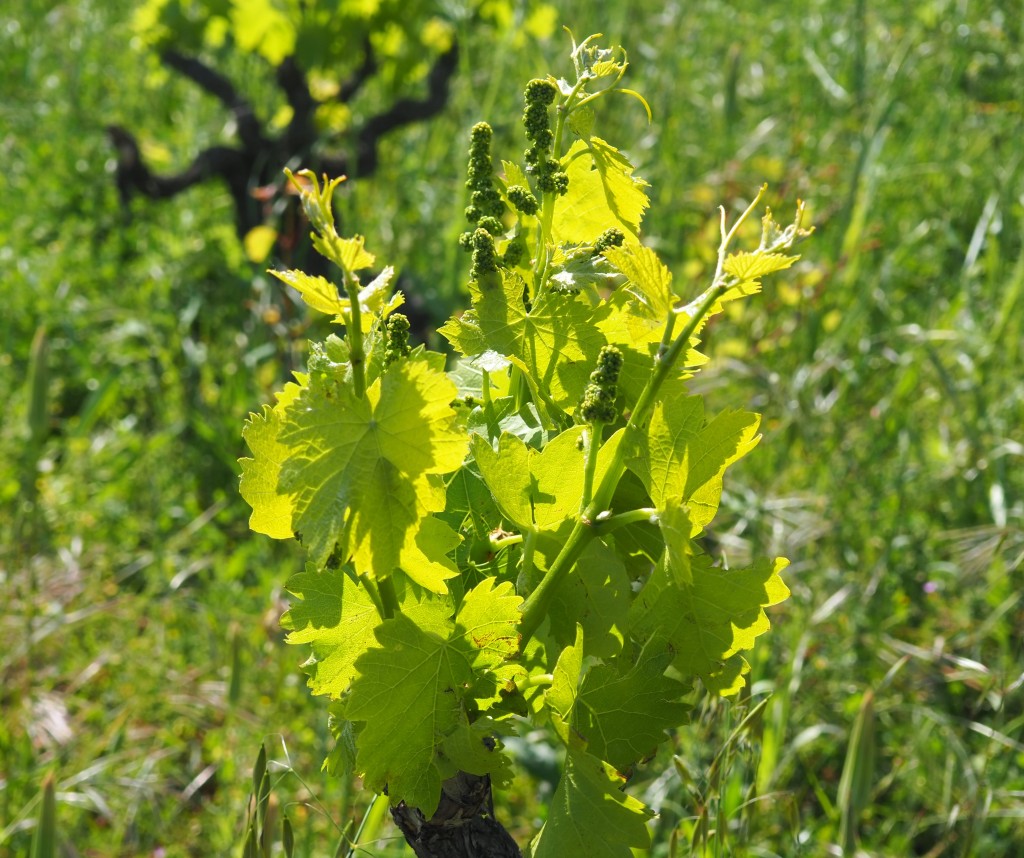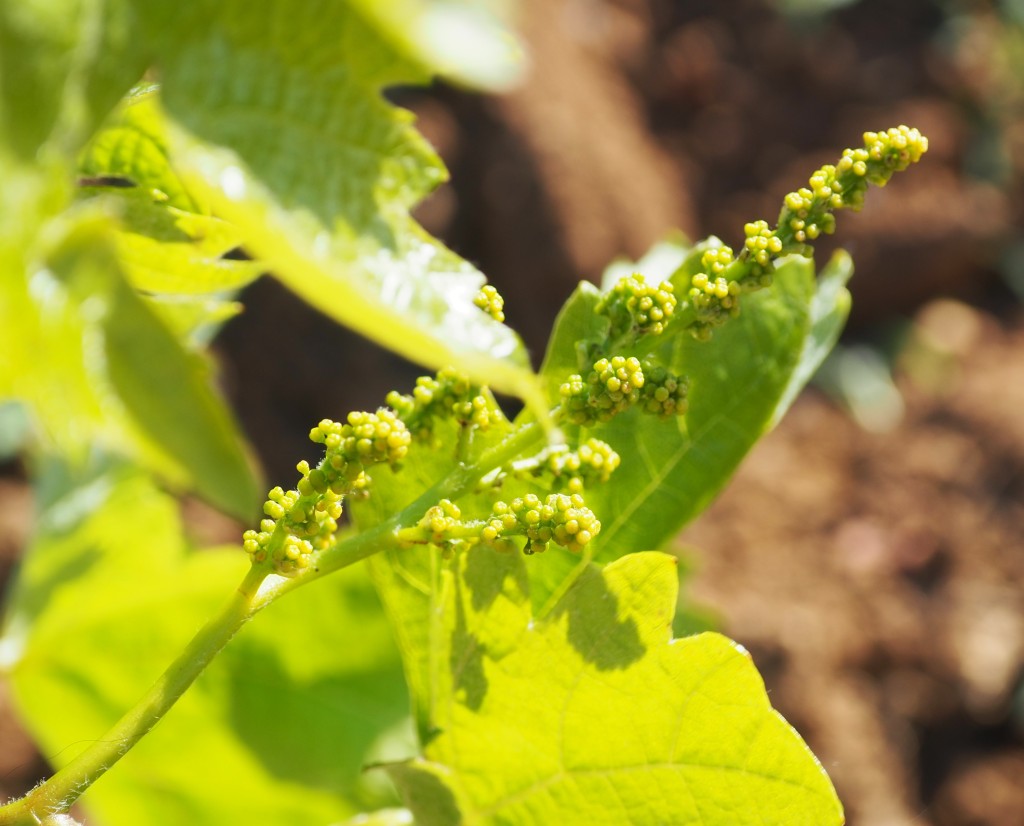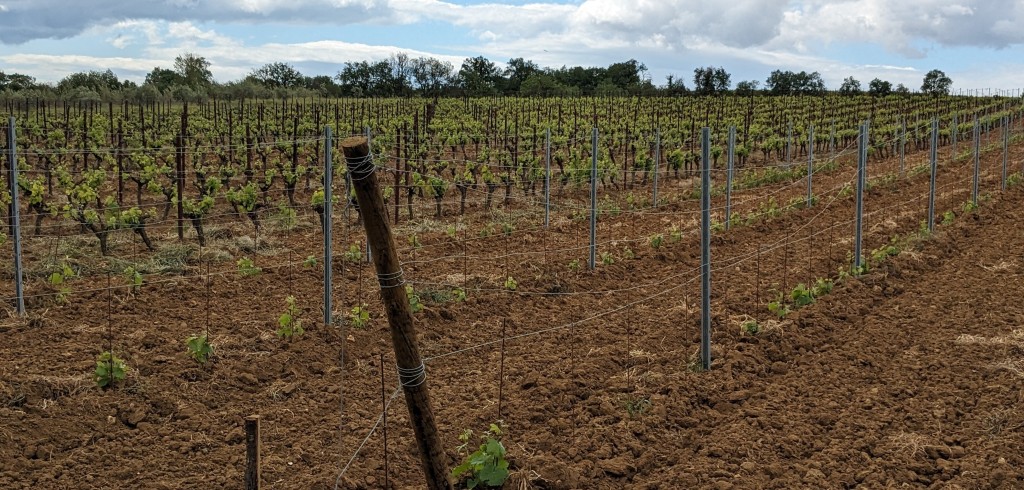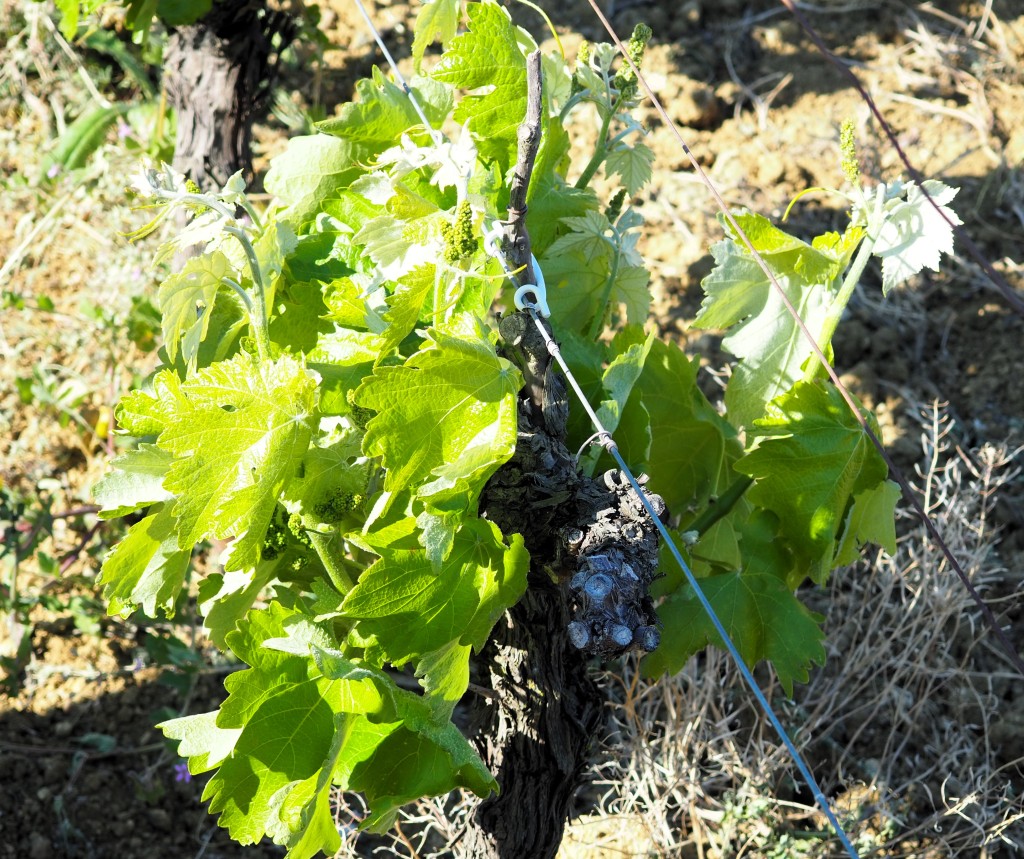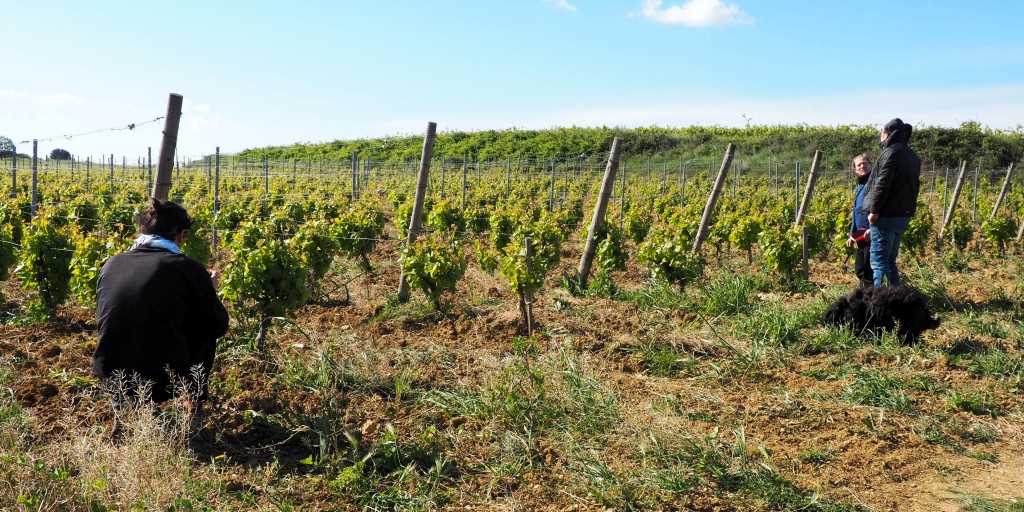
Strands sometimes come together. At Bons Vivants I met a Danish woman talking to Jeff Coutelou who is writing a thesis on natural wine, climate change and the environment. She had been told by many vignerons to talk to Jeff as he is so knowledgeable about vines, plants and the environment in general. She arranged to visit Puimisson on the 23rd, a week after the tour I featured in my last post. We were also welcoming Louis, from Narbonne, who has worked with Jeff many times at vendanges and, indeed, for extended periods. It turned out that he too is writing a thesis on natural wine as part of his studies for the University of Paris. So, a combination of my last few posts and coincidences galore led to another tour of the vineyards. At this time of year it is interesting to see how quickly the vines change, so were things so different in just a week?
As I said in the last post Jeff had held a gathering of fellow winemakers on the 18th and it was a cold day with a small fall of hail as we sat in the garden. One of the consequences had been that some of the newly budded vines were grilled by frost. Vines develop a contre-bourgeon after frost or hail damage, a kind of second attempt so they will grow through the season (unless more frost damage occurs) but grown vines will not bear so much fruit. Obviously, new vines won’t develop grapes but it was interesting to see how rapidly they responded to the damage.
In Rome vineyard the development of the buds and flowers was plain to see on the Cinsault vines.
On the tour some interesting points emerged. For example, Jeff explained how some of the grape varieties such as Macabeu are better adapted for coping with heat than others. The back of their leaves has a rougher, waxy surface protecting themselves better than the thinner leaves of other varieties.
A visit to the Flower Power vineyard also revealed an interesting contrast. This was planted ten years ago and it is fair to say that it has proved to be a disappointment after early promise. In 2016 I spent a whole day in this vineyard picking snails off the young vines, but, like the proverbial painting of the Forth Bridge, it was a job without an end. The snails returned that year and devoured much of the plants and they have never really recovered from that. The 2015 Flower Power wine was excellent, recognised by La Revue du Vin de France even, and widely available. However, since then the vines have produced such small quantities of grapes that they have had to be assembled with grapes from other vineyards. The vines themselves remain short though they have grown in the last couple of years.
Over the unpaved road is a vineyard planted by a conventionally farming producer two years ago. The vines there are much taller than the ten year old Flower Power vines. They are also very spindly and lack substance, fed by irrigation and fertilisers. They will make grapes for wine this year and probably be grubbed up within ten years, qualifying for subsidies! Now, you could argue that they will be have been more successful than the Flower Power vines but at what cost. For example the soils are bare and every time it rains the topsoils are washed away. This post from 2014 illustrates the point clearly.
Meanwhile, the water level in the marne created by Jeff to help animals was getting low. There were tadpoles and animal tracks showing it was doing its job but rain was needed here just like the rest of the vineyards. Happily, shortly after we left the Languedoc to return to the UK, heavy rains arrived for a few days and Jeff tells me that the vines are thriving though the water table is still very low beneath the surface.
